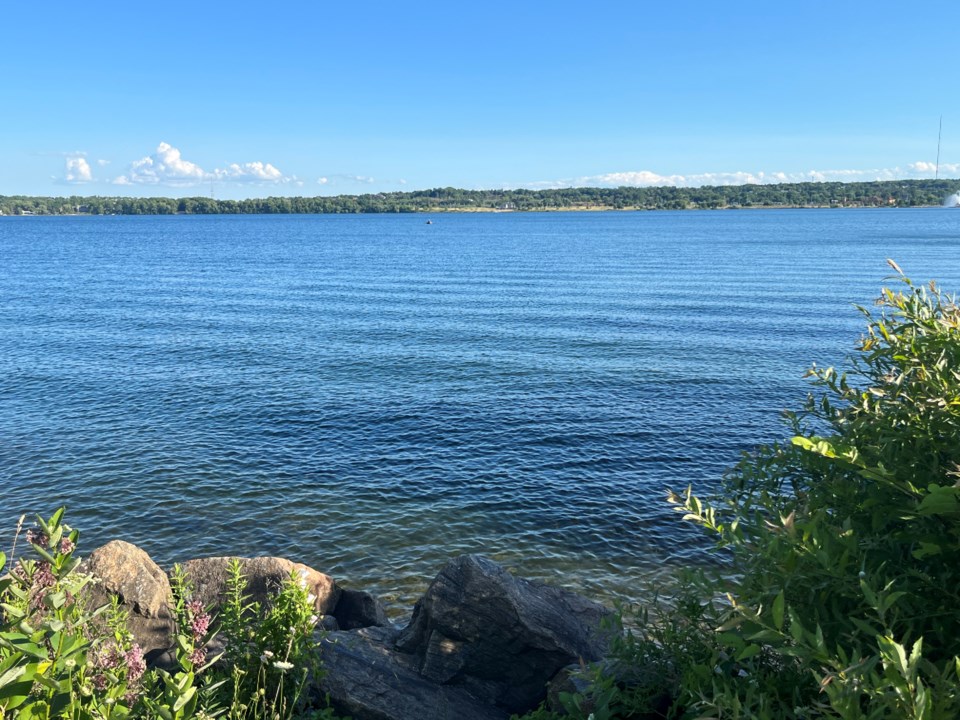The province is sinking another $1.3 million into four new multi-year projects to further reduce phosphorus levels entering Lake Simcoe.
Barrie-Innisfil MPP Andrea Khanjin, who is also Ontario’s minister of the environment, conservation and parks, made the announcement Thursday morning at Southshore Centre along the city's lakeshore.
“(It’s) to improve the health of the lake and the communities that depend upon it,” Khanjin said of the funding. “We’re taking action to restore and protect (Lake Simcoe).”
Khanjin said there has already been a 50 per cent reduction in phosphorus entering the lake from sewage treatment plants, and that algae levels have been reduced.
Three of the four projects are being led by the Lake Simcoe Region Conservation Authority (LSRCA).

“For many decades, phosphorus had been one of the foremost issues impacting the long-term health of the lake,” said Rob Baldwin, the LSRCA’s chief administrative officer. “The funding announced today will support necessary and extensive monitoring work that we do to calculate the amount of phosphorus entering the lake.”
Projects include water sampling and analysis to monitor phosphorus and other nutrients flowing into Lake Simcoe, to help determine which future actions can be taken to improve the lake’s overall health.
There will be a study of chemicals and metals in the water and sediment that could harm the lake. This research can help identify new threats to the watershed, as well as ways to protect it, now and during the long-term.
Projects also include creating wetlands and ponds, restoring streams, building channels and planting grasses to better manage stormwater in Innisfil, Newmarket and Oro-Medonte. These projects will help landowners and municipalities lower the amount of pollution going into Lake Simcoe from urban areas.
And Toronto Metropolitan University has received funding to conduct water quality research that will help tackle barriers to improving water quality from the Holland Marsh.
“Let’s be clear, the Holland Marsh is our salad bowl. (It) feeds our cities,” said Khanjin, citing its importance.
Since 2018, the province has committed more than $27.3 million to protect and restore Lake Simcoe, including a $24-million investment for a new phosphorus recycling project to help reduce phosphorus discharges from the Holland River into Lake Simcoe. These investments are part of a commitment to implement the Lake Simcoe Protection Plan.
“The lake has always been a touch point for everybody that lives in Simcoe County,” said Barrie-Springwater-Oro-Medonte MPP Doug Downey. “The importance of water, the importance of the ecology, we all just know it, but we have to tell our story and protect it for future generations.”
Barrie Mayor Alex Nuttall said the new funding needs to be spent wisely.
“There’s been some incredible wins, there’s also been some missed opportunities on Lake Simcoe,” he said. “I think when we’re putting this funding in place, we need to make sure that those who know the science, those who’ve done the work, are able to put those dollars where we believe they’re going to have best use and that’s what the (LSRCA) is doing.”
Nuttall also went on to criticize the federal government for not meeting its financial responsibility in funding Lake Simcoe’s health.
During the last four years, the province says it has invested more than $3.3 million in 19 multi-year projects in the Lake Simcoe watershed to improve stormwater management and help reduce phosphorous pollution.
Its reduction is needed to protect the lake’s cold-water fishery and prevent excessive weed growth and algae blooms.



